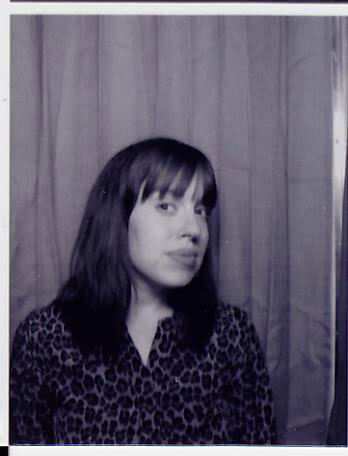Samantha was born in Chicago, IL. She received a BFA in Fine Art from Columbia College Chicago and an MFA in Visual Arts from The Art Institute of Boston at Lesley University. During the summer of 2003, Samantha studied drawing at Santa Repararta International School of Art in Florence, Italy. Her work has been published and exhibited in the United States and abroad. Samantha lives and works in Chicago, IL.
Born in 1982, Samantha VanDeman grew up in the suburbs of Chicago. She studied fine arts at Columbia College Chicago, receiving a BFA in 2005. During her last year in college, she took a B+W photography class and found her passion. From that point on, she started to actively documenting everything around her. In 2007, she returned to college, this time to earn a MFA in photography from the Art Institute of Boston at Lesley University in 2009. It was during her time at the low residency program at AIB, that she was able to have independent studies with artists such as Anne Wilson, Mayumi Lake, Jeanne Dunning, and Laura Letinsky. Samantha has exhibited her work nationally. Her work has been exhibited at Emory Visual Arts Gallery, Atlanta, GA; Finch and Ada, NY; New Orleans Photo Alliance Gallery, New Orleans, LA; Las Manos Gallery, Chicago, IL; Gallery 263, Cambridge, MA; Midwest center for Photography, Wichita, KS; Gallery 808, Boston, MA; Change Artist Space, San Francisco, CA; Perspective Gallery, Evanston, IL; Barrett Art Center Galleries, Poughkeepsie, NY; Fourth Wall Projects in Boston, MA; The Center for Fine Art Photography in Fort Collins, CO; Newspace Center for Photography in Portland, OR; Black Box Gallery, Portland, OR; Texas Photographic Society, San Antonio, TX ; Wright Museum of Art in Beloit, WI and Review Santa Fe 100. Samantha VanDeman is adjunct faculty at The Art Institute of Illinois in Tinley Park, IL.
All about Samantha VanDeman:AAP: When did you realize you wanted to be a photographer?My last year as an undergraduate at Columbia College Chicago, I took a Black and white photography class. It was then I knew I wanted to be a photographer. Up until that point, I wanted to be a painter.
AAP: Where did you study photography? I studied photography at The Art Institute of Boston at Lesley University. During my time at The Art Institute of Boston, I had independent studies with Laura Letinsky, Jeanne Dunning, Anne Wilson and Mayumi Lake.
AAP:Do you have a mentor?Laura Letinksy has been a friend/mentor since 2008
AAP: How long have you been a photographer?10 years
AAP: Do you remember your first shot? What was it?My first shot was of rotten fruit.
AAP: What or who inspires you?I’m inspired by silence, decay, kindness and long road trips. Artists who inspire me are Jenny Saville, Edward Hopper, Sally Mann and Fiona Apple.
AAP: What kind of gear do you use? Camera, lens, digital, film?Canon 5D
AAP: Do you spend a lot of time editing your images?I do minimal editing.
AAP: Favorite(s) photographer(s)?Sally Mann, Angela Strassheim, Nan Goldin and Corrine Day
AAP: What advice would you give a young photographer?Find your own voice and follow your gut. Your best work will come from the projects you are most passionate about.
AAP: What mistake should a young photographer avoid?Trying too hard to be different or copying another photographer’s style
AAP: An idea, a sentence, a project you would like to share?I’m currently working on a project called “Died Alone”. This project explores abandoned living spaces of people that died alone in their home.
AAP: Your best memory has a photographer?My fondest memory: The first time I explored the abandoned – now demolished Michael Reese Hospital in Chicago. I had never explored an abandoned place before Michael Reese Hospital, so it opened up a whole new world for me.
AAP: If you could have taken the photographs of someone else who would it be?Weegee or Walker Evans
